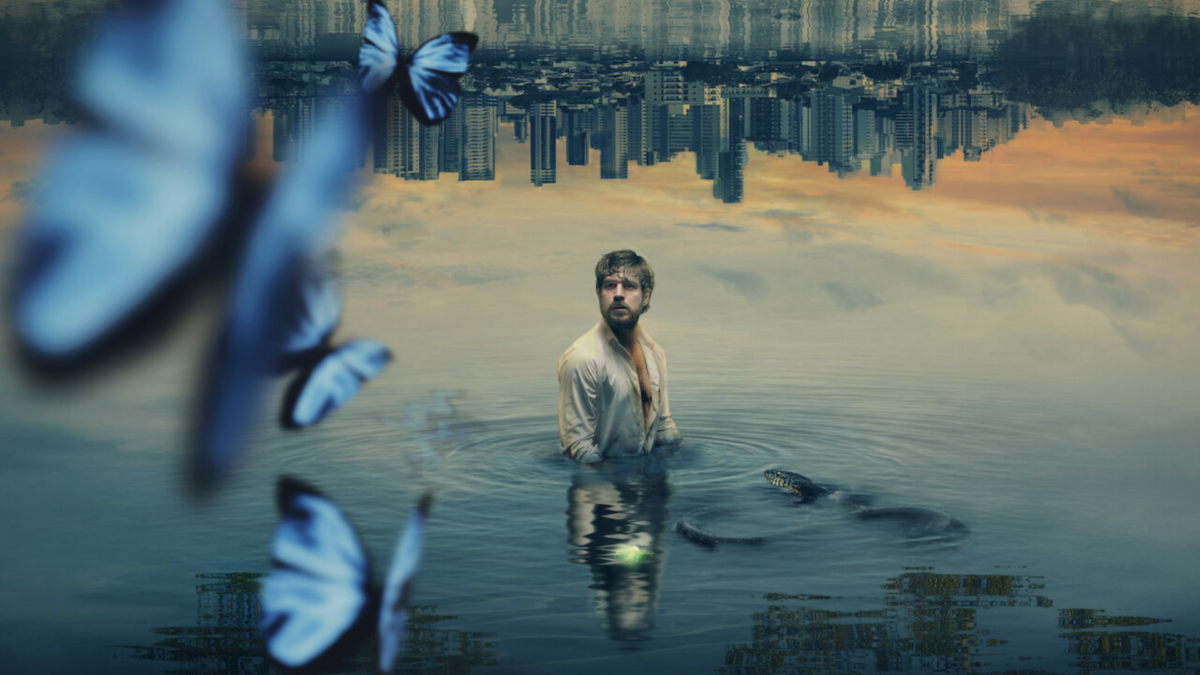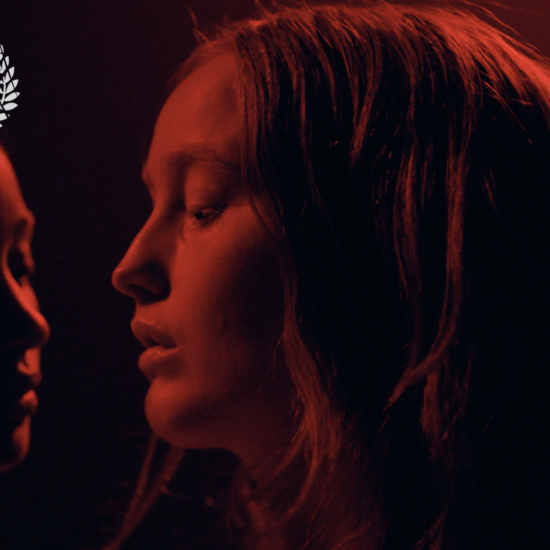
Horror has long been seen as underground. Films such as Rosemary’s Baby (1969), The Exorcist (1973), or The Evil Dead (1981) have been, for decades, talked about as corrupt media. Things to be afraid of and keep the children safe from. And if you grew up in a Christian environment—as I did—you’d learn to keep your distance from it.
It was only when in university that I began to truly explore this part of cinema. So, imagine my surprise when rewatching The Exorcist and suddenly noticing how apologetic the film was towards Christianity, and borderline conservative at times. Once I saw it, I couldn’t stop. The list of films with Christian mythology, characters, and ideology was endless and I kept wondering: why? Isn’t horror supposed to be a genre that questions mainstream mentality?
That is where Invisible City comes in. Created by Carlos Saldanha, Invisible City is a Brazilian fantasy/horror show produced and distributed by Netflix.
The series follows Eric (Marco Pigossi), an environmental police officer who, after the mysterious appearance of a Boto Cor de Rosa on a beach of Rio de Janeiro, is lured into an underworld of magic and dangerous schemes. Importantly, the Boto Cor de Rosa is a creature from Brazilian folklore that transforms into a man to impregnate women, only to return to its animal form and disappear.
Also Read: How The Good Priest Trope Helped Me Unpack My Religious Trauma
It all starts with the death of Eric’s wife, Gabriela (Julia Konrad), an anthropologist who studied a local community and its folklore. He was the skeptical person of the relationship and even after Gabriela dies in strange circumstances, he refuses to believe anything magical had an influence on it. It’s only after the dead body of the Boto Cor de Rosa, which he rescued from the beach, shapeshifts into a human corpse, that Eric is forced to acknowledge that some things might be beyond his understanding.
The first time the show introduces the idea of different kinds of mythology is not via the creatures, but through the debate between Eric and Gabriela. You could argue that Eric is a thematic representation of a Christian mentality. He might not necessarily believe in a God or a Devil. But he’s attached to the idea of a black-and-white world. He’s a police officer and works inside a system in which there are rules that you must follow, no questions asked. On the other end of the spectrum, we have Gabriela, a person dedicated to listening and understanding the many different cultures and experiences in the world.
This kind of right and wrong, good versus bad mentality creates a dangerous precedent to what Lucas Eric Harold Bergeson (2020) calls a sanitation of narrative. He explains that “(…) assuming the sameness of all stories, or universal archetypes, in the general adherence to a specific and defined mythic structure reduces the intricacies and characteristic differences that make cultures and religions unique (…).” Essentially, if you believe there are only two ways of telling a story—the right and the wrong one—you bear the risk of erasing nuance.
Also Read: 5 Scariest Moments in ‘The Exorcist’
It is fair to say that these characters encapsulate the thesis of the show of needing to move from a Christian mentality, where you are either saved or damned, to a more nuanced approach to existence. However, there might arise the question of why any of this is relevant. How is a show about folkloric beings important to the debate about our understanding of the world? Well, to answer that we must take a look back in time.
For decades, places like the USA and the UK have dominated the production and distribution of horror. These were industries with large international reach, something that helped them shape many of the tropes and conventions that would come to be associated with the genre. This influence reached many places, including Brazil, a country that was—and still is—an avid consumer of horror flicks. However, during the time these foundational films were being produced, the film industry in Brazil was still very new and its creators were actively trying to distance themselves from what was considered foreign cinema and horror movies were part of that.
Even though much of Brazilian cinema has approached mystical topics, filmmakers were hesitant to fully adopt the language and aesthetic of horror cinema. In his 2002 book, Dicionário de Filmes Brasileiros (Dictionary of Brazilian Films, in free translation) Antônio Leão da Silva Neto listed that from the 3,415 finalized movies in the 150 years of film in the country, only 20 were classified as horror and most were from the same creator, José Mojica Marins aka Zé do Caixão.
Also Read: ‘Anyab’: Egypt’s Answer to ‘The Rocky Horror Picture Show’
Unfortunately, this pushback against horror backfired. With the genre practically abandoned by Brazilian filmmakers, there was a gap in the market to be filled and Hollywood took advantage of that. Now, instead of a genre cinema rooted in local folklore, mythology, and culture, as was intended by Brazilian filmmakers of the time, the country was swapped into the puritanical dilemmas coming from the USA.
In his book, Religion and Popular Culture: Rescripting the Sacred (2008), Richard Santana explains that: “The United States is the world’s primary creator and exporter of popular mass culture and arguably one of the most religious countries in modern history. As a result, the coexistence of American Religion with popular culture has created a fertile yet caustic environment for new religious belief structures, new texts, and new worldviews that are uniquely American.”
That is why a show like Invisible City is such an interesting phenomenon. Even though the genre scene has been gaining traction in Brazilian cinema since the mid-2010s, with films such as Friendly Beast (2016) and Clarisse (2017), none would so openly adopt an alternative mentality to the dominant Christian-coded horror.
Unlike most horror films, where the Christian dualistic mentality dominates characters’ morals, Invisible City brings forward a different kind of mythology and therefore ideology to its narrative. For instance, when Luan (Manu Dieguez), Eric’s daughter, is shown to be possessed by an evil spirit named Corpo Seco, they don’t call an exorcist. Instead, they bring in a Pai de Santo—a healer usually associated with Afro-Brazilian religions—to help Luna find her way back into the physical world. Unlike in films such as Pet Sematary (1989), where an Indigenous burial ground is the source of the problem, these beliefs and cultures alternative to the mainstream are the solution to our characters’ troubles.
Also Read: 10 Horror Films That Improved on Their Novels
This is also reflected in the characters. Slowly we are introduced to the fact that folkloric beings such as Saci-Pererê, Cuca, and Iára live amongst humans. And while some of these beings are in fact dangerous, others are a little more nuanced and challenge our understanding of what is moral.
This is not to say the show never approaches Christianity. After all, Brazil still is a very Catholic country. However, when it does depict the church, it is never as the sole hero of the story, but just as a different and, at times, flawed approach to the topics presented by the show.
In season two we have the story of the Mula Sem Cabeça, a creature that is a mule with a pit of fire in place of its head. This creature only exists if a woman has an affair with a priest. She is then cursed with transforming into a mule every night. At first, we believe it’s the woman who is the sinner and who’s being punished. However, as their story progresses, we are shown that being the mule is not a burden, but a blessing. She doesn’t regret having the affair, because they truly loved each other. It is the priest, who is cowering in the face of challenge, that is causing them trouble. The monster has become a symbol of freedom, not of shame.
Of course, this is not the perfect show. Production and script issues do weigh down some of the impact the series could have. However, by exposing a new perspective and by questioning the stories horror films have been telling us for decades, Invisible City might have just sparked a new movement, one to recuperate horror from the tight clasp of God and The Devil.
Categorized: Editorials















